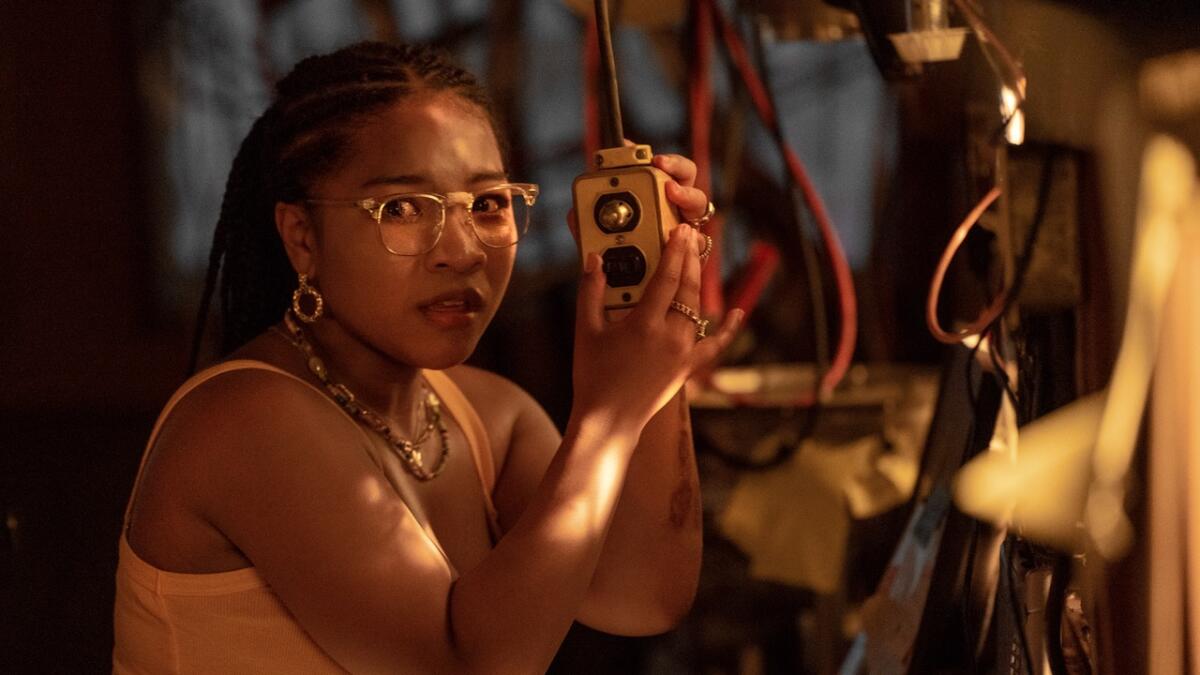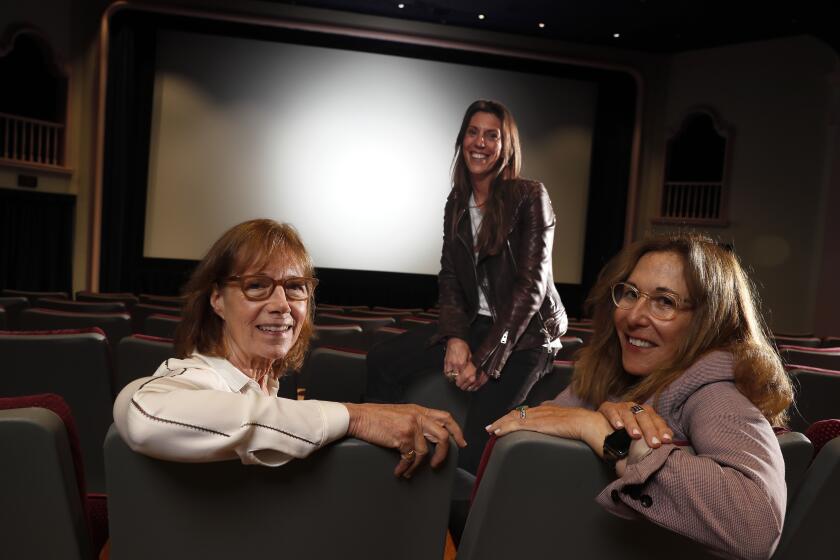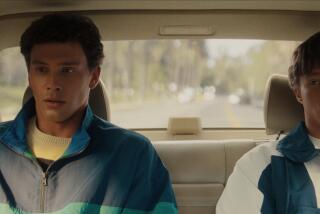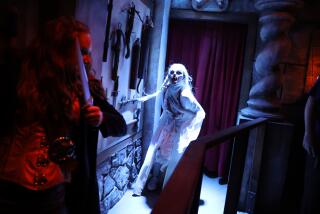Review: ‘The Angry Black Girl and Her Monster’ reimagines ‘Frankenstein’ with little thought

The feature debut from California born-and-raised filmmaker Bomani J. Story, “The Angry Black Girl and Her Monster” is a contemporary reimagining of Mary Shelley’s “Frankenstein.” Trading in 18th century Europe for a predominantly Black and working-class housing development, writer-director Story centers his film on Vicaria (Laya DeLeon Hayes), a brilliant teenager who has lost both her mother and sibling to brutal gun violence. Using her impressive scientific know-how, Vicaria attempts to bring the reassembled corpse of her older brother Chris (Edem Atsu-Swanzy) back to life. For the brainy young girl referred to by her neighbors as “The Mad Scientist,” death is presented as a disease that she wishes to cure.
While Vicaria’s community endures the deaths of its living, they also experience the loss of their dead. Early in the film, it is shared that a figure known as “The Bodysnatcher” has been stealing the corpses of the recently deceased. This is, of course, the work of Vicaria, who is so bright and studied to the point of being violently policed for it by insecure white teachers at her school. Secretively working in an empty electrical workroom in her housing complex, Vicaria steals away in the night, literally and figuratively, to work on her project of reanimation.
Her patchwork approach to physically piecing together Chris’ lifeless body is a macabre undertaking. Flesh and viscera are grotesquely manipulated onscreen by Vicaria in a manner that seems more interested in presenting gore than underscoring the care that a character like her would most likely bring to the handling of her brother’s remains. Although , yes, her hubris is motivated by an immediate and deep sense of loss, this fact — as well as that Chris’ form is haphazardly rebuilt using bits and pieces from other dead Black folks — are details that seem particularly unseemly given the charged political nature of the deaths we see and hear about here.
L.A.’s reopened Vidiots, both a theater and video store, hopes to inject a sense of shared commitment and community into the local film scene.
Surely there must be another way to meet the expectations and pleasures that horror offers while also protecting Black viewers from the potential harm of seeing murdered Black people reduced to what amounts to spare parts of decaying flesh. While ideas concerning the awakening of the dead are rife with transformational potential, in “The Angry Black Girl and Her Monster” the means used to materialize them leave much to be desired.
It’s a film that fails to ask what might it mean, narratively, to revive our dead, only to have them live — soullessly — in this futureless state. While created out of the twin powers of his sister’s grief and strong-willed nature, Chris (or not-Chris) as monster is condemned to monstrosity, only to once again be violently killed. Likewise, the logic of Chris as a monster is never really mapped out, offering him only as a spiritless symbol of Vicaria’s attempts to grapple with her loss using the methods she knows and understands best.
It is less that Vicaria’s character is desecrating the dead (her dead) or even that there is inherently no way to show Black death onscreen without retraumatizing Black audiences. It’s that here, the death we witness neither metamorphizes the effects of watching it nor offers a fresh take on standard conventions of the genre itself. While Story’s film ticks some of the basic requirements of a horror flick (jump scares, lurking figures in the shadows, campy and referential — if oddly attempted — special effects, a character’s all-too-confident plan gone wrong), it invokes an urgent and lived social context with little care or skill in navigating it. Given this, it makes me wonder: What exactly is the point of a movie like “The Angry Black Girl and Her Monster”?
While the film sets up its world in a promising way, offering Vicaria as a welcome intermediary in the brutality that too often attends working-class Black folks (especially Black boys and girls), we end up far too close to where we began: a wounded community in mourning and trying to survive in the wake of mass Black death. It’s a story that has so much metamorphic and cathartic potential, such a breadth of freedom to reimagine ideas of life and death, as well as an opportunity to present a reparative and thrilling approach to both. Instead, “The Angry Black Girl and Her Monster” settles for a two-step-forward, one-step-back mode of storytelling. While the capacity for life is returned to (most of) those who Vicaria cares for, it is, for me at least, no salve for the onscreen cruelty on which such a breakthrough depended.
'The Angry Black Girl and Her Monster'
Not rated
Running time: 1 hour, 31 minutes
Playing: Starts June 9, Laemmle Glendale; available June 23 on VOD and digital
More to Read
Only good movies
Get the Indie Focus newsletter, Mark Olsen's weekly guide to the world of cinema.
You may occasionally receive promotional content from the Los Angeles Times.











